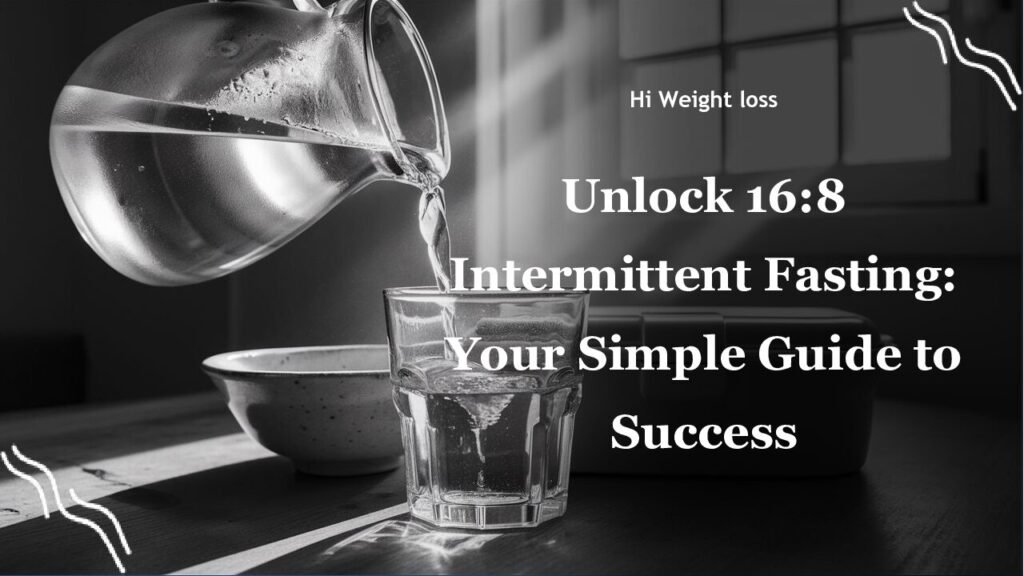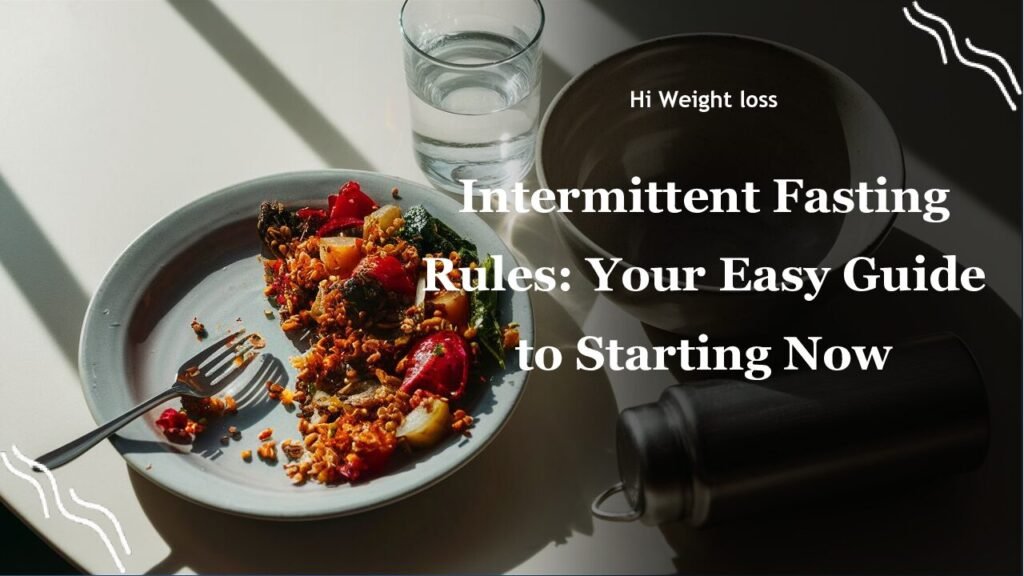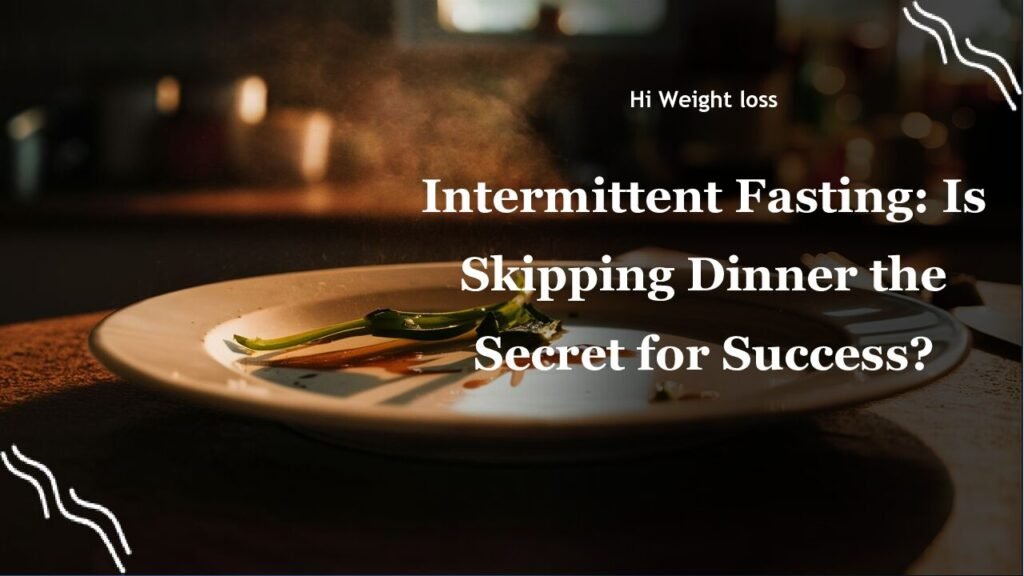“`
Feeling overwhelmed by the latest diet trends? Maybe you’ve heard about intermittent fasting but aren’t sure how to start? It’s easy to get lost in a sea of confusing advice, leaving you wondering if you could ever find a simple, effective approach to weight management and better health. Today, let’s dive deep into the 16:8 intermittent fasting method, breaking it down into easy-to-follow steps, and sharing some real-world experiences to help you succeed. This guide will not only explain *how to do 16:8 intermittent fasting correctly* but also give you practical tips to make it a seamless part of your life.
How to Do 16:8 Intermittent Fasting Correctly?
Understanding the Basics of 16:8 Intermittent Fasting
The 16:8 method is a type of time-restricted eating. It involves fasting for 16 hours each day and limiting your eating window to 8 hours. I remember when I first heard about it, I thought, “16 hours without eating? No way!” But, after doing some research and talking to friends who had tried it, I realized it’s more manageable than it sounds. In fact, most of the fasting time is during your sleep!
The premise behind the 16:8 method is simple: give your body a longer period without food so it can focus on other functions like cellular repair and fat burning. It’s not about deprivation, it’s about timing.
Step 1: Choose Your Eating Window
Your eating window is the 8-hour period where you consume all your meals and snacks. The great thing about 16:8 intermittent fasting is its flexibility; *you* get to choose when this window occurs based on *your* schedule. For many, a window between 12 pm and 8 pm works best, as it allows for a regular lunchtime and dinner. I, for example, prefer to have my eating window from 11 am to 7 pm. This aligns perfectly with my work schedule, and I found it easier to fast in the morning when I’m generally not as hungry. Experiment a little and see what works best for you!
Step 2: Plan Your Meals
Just because you have an 8-hour window to eat doesn’t mean you can just eat whatever you like. The key is to focus on nutritious and well-balanced meals. Think whole foods, lean proteins, plenty of vegetables, and healthy fats. I used to just eat whatever was convenient when I wasn’t fasting, but *planning meals* made a huge difference. Not only did I feel more energized, but I also started losing weight more consistently. Think about it: would you rather have a fast-food burger, or a lovely chicken salad loaded with colorful vegetables? The latter not only tastes better but also nourishes your body.
Here’s a simple approach I follow:
- Lunch: A big salad with grilled chicken or fish, a variety of veggies, and a light dressing.
- Snack: A handful of almonds and some berries.
- Dinner: Roasted vegetables with lean protein like lentils or tofu.
Step 3: Stay Hydrated
During your fasting period, you need to make sure you’re drinking plenty of water, black coffee, or unsweetened tea. Not only does this help keep you hydrated, but it also helps to suppress your appetite. I remember the first few days of fasting, I kept feeling like I was hungry. Then, I started drinking a big glass of water whenever I felt hungry and it helped tremendously! Also, the right drinks can help you reduce headaches that sometimes accompany starting *intermittent fasting*. The trick is to keep sipping throughout the day rather than waiting until you’re thirsty.
Step 4: Listen to Your Body
It’s important to be mindful of how you’re feeling during both your fasting and eating windows. If you’re experiencing intense hunger, fatigue, or headaches, don’t push yourself too hard. Start with a shorter fasting period and slowly work your way up to 16 hours. Your body needs time to adjust. When I first began, I started with a 12-hour fast and then slowly increased it by an hour each week. Remember, *your* well-being is the priority.
Step 5: Incorporate Exercise
Combining intermittent fasting with regular exercise can amplify the benefits. It’s a great way to boost your weight loss, and enhance your health. However, you need to be mindful of your energy levels during the fasting period. I noticed I was slightly weaker during my fast, so I preferred to workout during my eating window. Experiment to see what time works best for you. Listen to your body, and remember, it’s about finding the balance between exercise and your fasting schedule.
Step 6: Manage Stress
Stress can really throw off your fasting routine. High stress levels can lead to increased cravings, making it harder to stick to your eating schedule. When I feel stressed, I tend to crave sugary foods, which definitely don’t fit into a healthy eating plan. To manage stress, I’ve made it a point to incorporate stress-reducing activities into my day like meditation, yoga, or even a simple deep-breathing exercise can help. I’ve noticed that when my stress is under control, it’s much easier to adhere to the *16:8 intermittent fasting* schedule.
Step 7: Be Patient and Persistent
It’s important to remember that the effects of intermittent fasting take time. You won’t see immediate results, but if you stick with it, the benefits will accumulate over time. There will be days when you struggle, but that’s perfectly normal. The key is not to get discouraged. There was a time when I felt so discouraged because I felt like I wasn’t losing weight, but after reviewing my food intake and making adjustments, I saw results. Consistency is key, so keep at it and you’ll be amazed at the progress you make.
To give you an idea of what a sample schedule might look like, consider this table:
| Time | Activity |
|---|---|
| 8:00 AM – 12:00 PM | Fasting (Water, black coffee, or unsweetened tea only) |
| 12:00 PM | Lunch (Nutritious meal) |
| 3:00 PM | Snack (Healthy snack) |
| 6:00 PM – 7:00 PM | Dinner (Nutritious meal) |
| 7:00 PM – 8:00 AM | Fasting (Water, black coffee, or unsweetened tea only) |
Remember, this is just an example. Adjust the timing to suit your needs. The most important thing is to listen to your body and find a pattern that works for you.
By following these steps, you’ll be on your way to effectively incorporating *16:8 intermittent fasting* into your lifestyle. It’s not just about weight loss; it’s about a journey toward better health. Remember, it’s about what is best for *you*.

The benefits of 16:8 intermittent fasting extend beyond weight loss. Research has shown that it can improve insulin sensitivity, reduce inflammation, and even promote cellular repair. For example, a study from Live Science has pointed out some of the health benefits of intermittent fasting. When it is done correctly it can have positive effects on your body. Also, Healthline highlights that one of the benefits of this strategy is weight control. As mentioned earlier, it’s not just about shedding pounds, it’s about building a healthier body from the inside out.
I encourage you to give it a try. The journey of better health is often paved with small steps. It will be worth it. There’s a lot of support available from the community, and it’s always a good idea to consult with healthcare professionals to ensure that this type of eating plan is right for you.
Conclusion
In summary, understanding how to do 16:8 intermittent fasting correctly involves choosing an eating window that fits *your* lifestyle, planning your meals to ensure they are nutritious, staying hydrated to manage hunger and reduce headaches, listening to *your* body to avoid overdoing it, incorporating exercise to enhance the benefits, managing stress to prevent cravings, and being patient and persistent to achieve long-term success. My own experience has been incredibly rewarding, from having more energy to feeling great in my own skin. It’s not a quick fix, but rather, a sustainable lifestyle change. It’s crucial to remember that consistency is key to seeing results with intermittent fasting. Don’t be discouraged by initial challenges, keep your goal in mind, and make the necessary adjustments. Your health journey is uniquely yours, and intermittent fasting can be a great way to achieve wellness. Go ahead and take the first step towards achieving a healthier you! Share this article if it has been helpful, and let’s support each other on this path to wellness.
FAQ
What can I drink during the 16-hour fasting period?
During the 16-hour fasting window, you can drink water, black coffee, or unsweetened tea. These drinks are calorie-free and will help keep you hydrated.
Is the 16:8 intermittent fasting method safe for everyone?
Generally, yes, but it may not be appropriate for everyone. If you have underlying health conditions, it’s best to consult with your doctor or a healthcare professional first.
How quickly will I see results with the 16:8 method?
Results can vary from person to person. Some people may see changes in a few weeks while others may take longer. Be consistent and don’t get discouraged by slow progress.
Can I exercise during my fasting period?
Yes, you can. Listen to your body and adjust your workout intensity as needed. Some people prefer to exercise during their eating window.
What if I feel intense hunger during my fasting period?
If you feel intensely hungry, try drinking water or a calorie-free beverage. If the hunger is unbearable, it may mean that your fasting window is too long and you should adjust it.
“`



